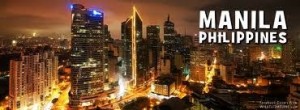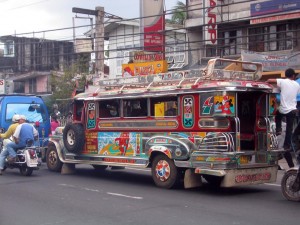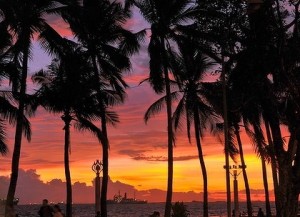Seniors Search For “Pearls” in Manila
The Philippines, an archipelago in Southeast Asia, is made up of over 7000 islands. Beaches, volcanoes and wildlife are among the attractions that tempt senior tourists to the country. The most visited places include the urban sprawl of Manila, islands with exotic beaches and sites of outstanding natural beauty.
Under Spanish rule, Manila was known as ‘The Pearl of the Orient’ as a result of its central location in the vital sea trade routes and the jewel of Spain’s empire in the Pacific. Early tourists, like the 19th-century traveller Fedor Jagor, described it as a splendid, fortified city of wide, cobbled streets and regal townhouses. Sadly, little remains of that splendid city today. While Manila is the capital (1.65 million), Quezon City is #1 with over one million more citizens (2.75 million).
Call it “Gumbo”
The city’s cultural gumbo of Malay, Spanish, American, Chinese and Arabic influences is heady and rich, and often takes first timers by surprise. Senior travelers will discover a city with a rich past, a vibrant lifestyle, and warm, hospitable people.
As in many developing-world cities, the traffic is stifling, the poverty pervasive, the urban sprawl daunting and pollution reigns. Mexico City is like that and your’s truly loves Mexico City. Embrace its beautiful chaos, even for just a day, and senior travelers will be rewarded.
Tourism in Manila is an important contributor to the growing economy. As of 2010, Manila and its region remain the most popular tourist destination in the country with overseas visitors numbering 1,480,871.
Introducing Manila To Senior Citizens, A Global City
Senior travelers will not be lacking for sights to see and things to do in Manila. Lonely Planet starts us off with Rizal Park and Fort Santiago. Rizal Park is spread out over some 60 hectares of open lawns, ornamental gardens, paved walks and wooded areas, dotted with monuments to almost every Filipino hero you care to mention.
Manila is one of remarkably few cities in Asia that looks out to the west over the sea. Throw in one of the few plus sides of the Filipino capital’s pollution problem — the smoggy clouds send light and color bouncing all over the place — and you’ve got a recipe for utterly spectacular sunsets.
Listed as a global city, Manila has its strengths in the arts, commerce, education, entertainment, finance, healthcare, media, professional services, research and development, tourism and transport making it the historical, cultural, political, economic and educational center of the Philippines.
This newspaper enjoys Manila and lists 20 good reasons why world travelers should not miss this city. They list Corregidor Island as a highly sought after day trip from Manila. For American tourists it is still called “The Rock” because it served as the major bastion of Philippine’s Allies during World War II.
So do some digging, explore the many places to visit and enjoy your visit to Manila. jeb



